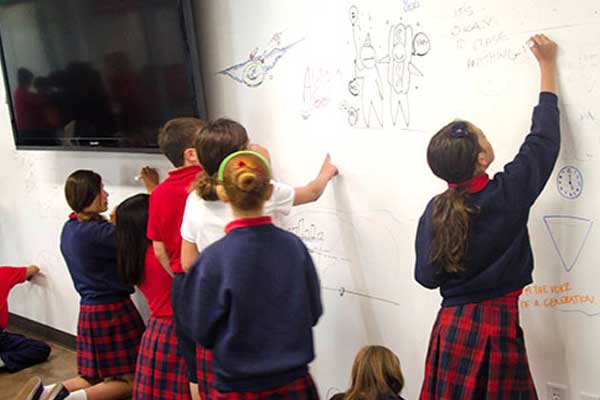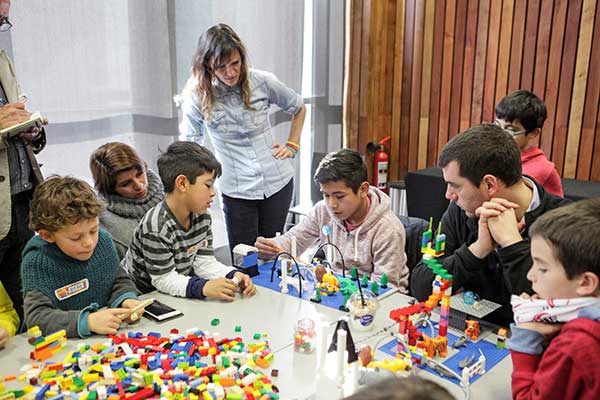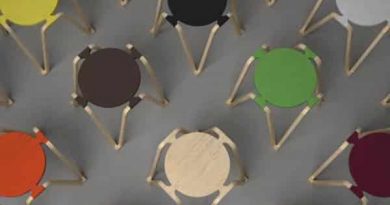10 Tips to Achieve Creativity and Innovation in Education
Our current world is evolving more rapidly than the capacity of any existing education system. The challenge of learning is getting even harder for the next generations. We do not have a prediction of how tomorrow will look like, but we know that flexible process models are able to face the changes comparing with fixed-style models; we know that the ability to adapt helped our ancestors to survive on this planet for about six million years.
This leads us to the question; what is the most important skill to teach our kids in schools? The answer: How to build creative and innovative minds that can adapt and face future unpredictable challenges. Albert Einstein, Steve Jobs, Mark Zuckerberg and Larry Page provide successful examples of how adopting innovation in education can help in building creativity and better abilities in order to solve problems.
Many governments adopt the policy of free basic education, a large base of students are privileged by this policy to learn. These policies have very wide range of standards, quality and infrastructure. Therefore, a focus strategy on the essential skills should be implemented. These skills include the following:
- Think creatively in order to compete in the market
- Find innovative solutions for existing and future problems
- The ability to evaluate current status and find better alternatives if needed

In order to achieve the above, we need to apply creative and innovative strategies in education with a particular focus on the basic kid’s education. While education systems are varying in their capability to implement creative teaching methods and curricula, a teacher can easily adapt their teaching methods towards more creative thinking through the following tips:
Encourage children to find the answer
It is also called the Pestalozzi method. Unlike the ordinary models of giving the direct answers for questions, this method aims to encourage students to find the answers on their own. It helps the students to learn how to observe, imagine, judge and reasoning. One of the successful examples of applying this method is Albert Einstein.
Children learn, teachers observe
The current educational system depends on teacher-driven lessons, where the teacher leads the class leaving no space for students to self-develop their skills and capabilities to innovate. The Montessori method aims to give a space of students to self-learning while the teachers observe the progress. One of the successful examples of using this method is Google founders, Larry Page and Sergey Brin.
Sit in round tables rather than desks
This method, known as the Harkness style of teaching, aims to turn the class into an open conference style of interaction rather than the one way seating of traditional desks. The students sit around a round table, which encourages them to take responsibility and share his or her opinions instead of following the linear teacher-driven class.
Focus on one project instead of multiple projects
While the existing teaching methods depend on individual lessons and projects, focusing on one project enables students to put the knowledge together in the form of focused questions and assessments for the project or the problem. This method is called Project Based Learning and it focuses on combining the knowledge in one large practical project.
Focus on the concept
Providing knowledge in the form of facts orients student thinking while inhibiting creativity and the ability to imagine. Focusing on the concepts help the students to find solutions through exploring ideas and evaluating the best answers.
“Imagination is more important than knowledge. Knowledge is limited. Imagination circles the world.” Albert Einstein
Every idea is a patent
Many educators believe that innovation should be unique and submitted as a patent. In the education domain, if the student invented an existing product or solution, this is a success and can be considered as an innovation. It shows his or her ability to create new ideas based on their sense of emerging knowledge and experience. Students tends to invent things or find solutions, this behavior should be reinforced over the course of teaching them strategies of creative thinking and innovation.
Use design thinking tools and methods
Design thinking methods aim to unleash creativity and explore innovative solutions in the context of group discussion and brainstorming. There are many design thinking methods that could be implemented in class such as the following:
- Disney model (dreamer, realist and critic)
- Lego Serious Play
- De Bono Six Thinking Hats
- Scamper technique for creative thinking
- Problem-solving using Hurson’s product model
- Reverse brainstorming
Each method has its own characteristics and learning outcome. Therefore, the educator should select the proper design thinking method based on the student’s age and the targeted outcome of each brainstorming discussion.

Problem-to-Solution vs Solution-to-Problem models
The students have to identify two directions for innovation; Problem-to-Solution and Solution-to-Problem. The first model drives the students to find solutions for existing problems. In essence, the student identifies a problem that occurs everyday and tries to explore how to solve it. The second method is to find a solution for a problem that does not exist yet or to make life much easier.
The two directions aim to help students to think of the problem with different perspectives. While the first model focuses on existing problem, the second direction focuses on innovating better solutions, which relates to human-centered design.
Reflect on previous taught lessons and skills
While most traditional curricula focuses on moving from lesson to another, there should be a rumination process that helps in linking between the new lessons and previously taught knowledge and experience. This linkage builds a continuation in the education process and helps student to think critically and evaluate problems in order to reach innovate solutions.
Acknowledge innovation in rubrics
Every innovative idea and discovery should be rewarded during the assessment process, this should be reflected by the rubric of criteria. Educators are encouraged to add a rubric section that allows them to evaluate creative ideas and innovation independently from the rest of the grading criteria. Innovation should reflect on the final grading and the rewarding policy.
Conclusion
Innovation and creativity are part of the essential skills that enable students to meet with future challenges and market competitions. While current educational systems do not provide the necessary creativity and innovation strategies required to meet with these demands and challenges, educators can implement a number of tips and techniques that can help students to think creatively and find innovative solutions for existing and future problems.
The tips above can be applied either individually or in bulk during the educational process. While educational systems may prevent educators from applying some of the above tips due to administrative and other reasons, educators should select the methods which suits the existing educational system, school level and currently taught curricula.







nice!
One super simple way to boost children creativity is to use captivating videos (STEM, humor, music and similar) within places kids do not expect like learning lessons. For example, we’ve used video clips in gabrielsseeds. eu from Jule Verne machine park in math and logic learning apps and kids went totally crazy about robotics, they draw many imaginary robots for days.